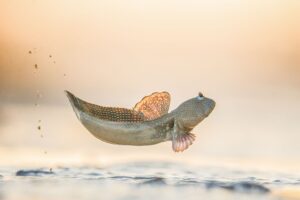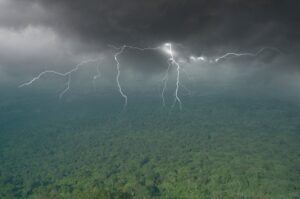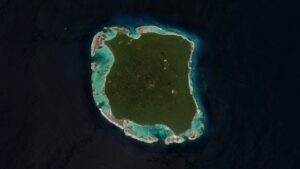Photographs like the one above don’t come easily — even with a camera trap.
German photographer Sascha Fonseca spent three years camera-trapping in the Ladakh region of the Indian Himalaya to capture an image just like that one.
He made his own camera housings to withstand the region’s -20˚C temperatures, high altitude, and fierce snowstorms — as well as the occasional snow leopard inspection. By using automatic cameras with remote sensors and external flashes, Fonseca captured images of the region’s surprising diversity: blue sheep, red foxes, ibex, snow martens, and weasels.
Then, in 2021, he got “the shot” — an image so good that it won this year’s People’s Choice award in the London Natural History Museum’s contest for Wildlife Photographer of the Year.
“When I first saw the photo, I knew it would win something,” Fonseca told ExplorersWeb. “It was a wild snow leopard, close up, in the snow. And there’s this amazing winter wonderland behind it. It was amazing. He looked directly toward the flash. And this is why his face is so nicely illuminated…It’s a photo that could not be replicated. He comes, he stands there, he looks.”
Ver esta publicación en Instagram
Learning to use camera traps
Fonseca isn’t a photographer by trade. Originally from a small town in Germany, he works full-time for a company in Dubai, a location that allows him to travel easily to places like the Himalaya.
He didn’t start shooting until 2013 when he began taking trips to East Africa to photograph the region’s world-renowned wildlife. But he quickly grew tired of daytime images of lions. Everyone comes home with the same telephoto image of a bored animal snoozing in the hot sun, Fonseca said.
He wanted to capture images of big cats at night when they’re active, so he started learning how to use camera traps. The motion-sensing technology has transformed nature photography in recent years, along with drones and time-lapse.
It wasn’t an easy process, especially during the pandemic, so Fonseca trained locals to help maintain the cameras when he couldn’t come himself. For about two years, Fonseca traveled from Dubai to Jaipur, managing his camera traps of Bengal tigers at the outskirts of Ranthambhore National Park. His frequent trips led airport officials to wonder if he was a gold smuggler.
But like any good wildlife photographer, Fonseca stayed patient, which has rewarded him with incredible images of wild animals — especially the big cats that he loves.
“It’s 50 percent preparation and 50 percent luck,” said Fonseca. “It can be very frustrating and very rewarding, which makes it so interesting. You never know what you’re going to get.”
Ver esta publicación en Instagram
‘You see the wilderness in his eyes’
Capturing a subject’s eyes is crucial to a successful portrait. For Fonseca, that is especially true when shooting wild animals. It takes years to get a perfect photo of a wild cat like a Siberian tiger or a snow leopard. With so much time waiting and watching, Fonseca learns to recognize each animal’s specific personality.
When you look at one of the photos above, he said, you’re not just seeing an animal, but an individual.
“It’s their eyes. They’re so charismatic,” he said. “It’s their personality, their character. You start to recognize the individuals after enough time. Some are skittish, some don’t care at all about the camera — you get to know them like people. If I showed photos of three different snow leopards, they might look the same to you, but to me, I know each one personally.”
Ver esta publicación en Instagram
Those eyes are why so many people resonate with images of big cats, Fonseca said, even as poaching, habitat destruction, and climate change continue to threaten their very existence.
“If you look at the photo of a captured animal, versus a photo like this, you see the spirit. You see the wilderness in his eyes,” Fonseca said. “It’s those expressive eyes.”
The public clearly agrees.
Of more than 40,000 entries received from 93 countries across the world, the London Natural History Museum’s panel shortlisted Fonseca’s image for its People’s Choice category.
A record 60,466 nature photography fans voted, and “the ethereal beauty of the snow leopard and its surroundings clearly resonated with them,” the panel’s judges said.
Interested in seeing more of Fonseca’s work? Check out his website and Instagram. Or if you’d like to order a print, you can choose from a selection on Red Bubble.






